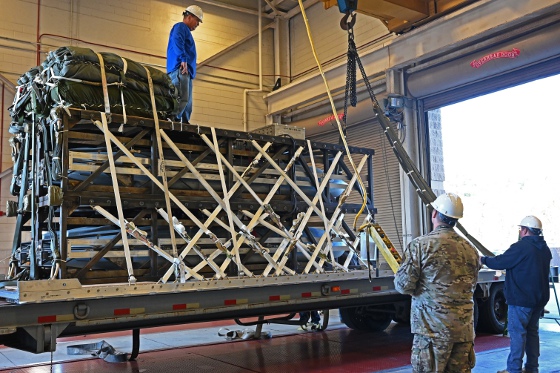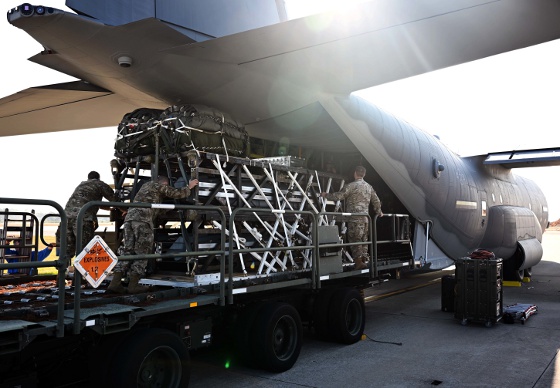 |
| March 22, 2022 | Volume 18 Issue 12 |
Designfax weekly eMagazine
Archives
Partners
Manufacturing Center
Product Spotlight
Modern Applications News
Metalworking Ideas For
Today's Job Shops
Tooling and Production
Strategies for large
metalworking plants
U.S. Air Force live tests Palletized Weapon System -- cruise missile fired from airborne parachuting platform

Airmen and Riggers with the 1st Special Operations Squadron Logistics Readiness Squadron load a Rapid Dragon Palletized Weapon System aboard an MC-130J Commando II at Hurlburt Field, FL, Dec. 13, 2021. [Credit: U.S. Air Force photo by Staff Sgt. Brandon Esau]
The U.S. Air Force Rapid Dragon Program, a fast-paced experimentation campaign led by the Air Force Strategic Development Planning and Experimentation (SDPE) office, successfully completed its final flight test December 16, 2021, at the Eglin Air Force Base (Florida) Overwater Test Range.
The flight test capstoned a two-year series and culminated in a live fire of a current-inventory cruise missile armed with a live warhead. Rapid Dragon demonstrates the ability to employ weapons using standard airdrop procedures from cargo aircraft using the Rapid Dragon Palletized Weapon System.
The program name is derived from a thousand-year-old Chinese military designed crossbow catapult that launched multiple crossbow bolts with the pull of a single trigger, raining destruction down on armies from tremendous ranges. These lethal devices were called Ji Long Che (Rapid Dragon Carts). Today, the Rapid Dragon concept is changing the game again, this time as an airborne delivery system for U.S. Air Force weapons. Like its namesake, these palletized munitions promise to unleash mighty salvos en masse on distant adversaries.
During the December test, an MC-130J flown by an Air Force Special Operations Command operational flight crew received new targeting data while in flight that was then routed to the onboard cruise missile flight test vehicle (FTV). The aircraft-agnostic Battle Management System's inflight receipt and upload of the new targeting data into the FTV was a first-time achievement with a live cruise missile.

The Rapid Dragon Program demonstrates the ability to employ weapons using standard airdrop procedures from cargo aircraft anytime and anywhere. [Credit: U.S. Air Force photo by Staff Sgt. Brandon Esau]
VIDEO: The U.S. Air Force's Rapid Dragon Program is taking palletized munitions to the next level.
The next step for the Rapid Dragon Program will be a live-fire test with a cruise missile from a C-17 in Spring 2022, demonstrating the aircraft-agnostic capabilities of the Palletized Weapon System. Of note, the new retargeting methodology developed by the Rapid Dragon team is designed to be transferrable to other strike and cargo platforms, potentially increasing the lethality of those aircraft. Lastly, a follow-on program will look at expanding the Rapid Dragon carriage portfolio to include additional weapon systems and multiple effects capabilities, as well as continuing the maturation of the system, taking it from a developmental prototype to an operational prototype over the next two years.
Other demonstration participants included the Naval Surface Warfare Center-Dahlgren, Standoff Munitions Application Center, Lockheed Martin Missiles and Fire Control, Systima Technologies, Safran Electronics & Defense, Parachutes USA, and R4 Integration.
Agility and collaboration enabled this government/industry team to go from a design to a system level flight test in 10 months, followed by a live fire five months later. During those last five months, Rapid Dragon has conducted five system-level flight tests using three different aircraft (MC-130J, EC-130SJ, and C-17A).
Source: U.S. Air Force Research Lab
Published March 2022
Rate this article
View our terms of use and privacy policy
